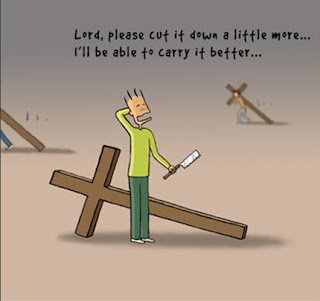 |
| La Virgen de Caridad - The Virgin of Charity |
As Pope Benedict XVI visits Mexico and Cuba this week, there is special attention given to The Virgin of Charity (La Virgen de la Caridad,) a miraculous statue of the Virgin Mary in the mining town of El Cobre, outside Santiago in southwest Cuba. Her shrine is the most important religious site on the entire island. A focus of intense popular devotion, the beloved Virgin of Charity was declared the patron saint of Cuba by the pope in 1916. The town of El Cobre was founded in 1550 as a Spanish copper mine, worked by slaves and Indians. One day in 1608, two Indians and a slave boy were gathering salt on the coast near El Cobre when they saw something floating in the water. It was a small statue of the Virgin Mary, carrying the Christ child and a gold cross. She floated on a board bearing the inscription, Yo soy la Virgen de la Caridad, "I am the Virgin of Charity."
 |
| The miraculous statue at El Cobre |
At the time, the church in El Cobre was dedicated to Santiago, St. James, the powerful patron of the Spanish conquest. So the statue of the Virgin was placed in a thatched hut instead of in the church. But on three successive nights, the statue disappeared from the hut and was found on top of the hill above El Cobre. The Virgin of Charity resided in several small shrines until 1630, when the copper mine was closed and the slaves were freed. She then took St. James' place above the high altar in the church, a symbol of the triumph of the people over the Spanish conquerers.
 |
| El Cobre Basilica in Cuba |
Since then, the Virgin has continued to assist her people and has been credited with countless miracles. In 1916, the Pope declared her the patron saint of Cuba. El Cobre Basilica was built to house here in 1927. In 1998, Pope John Paul II crowned her statue during his historic visit to communist Cuba. In the 1950s, Ernest Hemingway gave the Virgin the Nobel Prize for Literature he won after writing ‘The Old Man and the Sea’ in Havana. Today, the Virgin of Charity in El Cobre continues to receive streams of visitors and stacks of votive gifts. Common objects left in more recent times include replicas of rafts, representing safe journeys to America, and photos of activists who have been imprisoned by Castro's government. It is very rare to see anti-government statements in public in Cuba, but the Catholic Church has achieved some independence from the government, and the Virgin herself seems to transcend the dispute — members of Castro's military come here, too. On March 26, 2012, the Pope celebrates Mass on the occasion of the 400th anniversary of the island's patron saint, at Santiago de Cuba in her national shrine.




























































